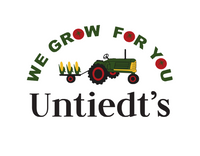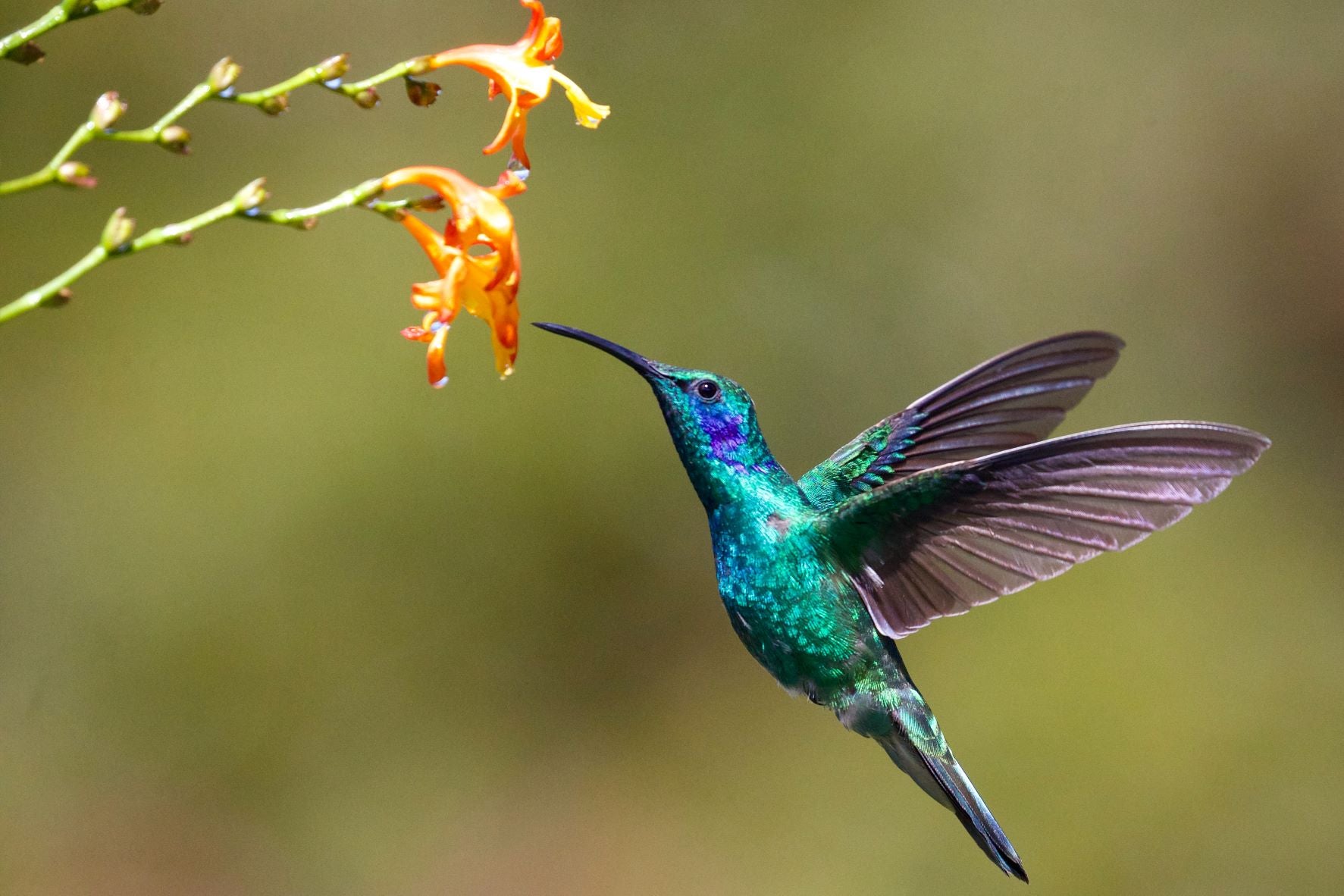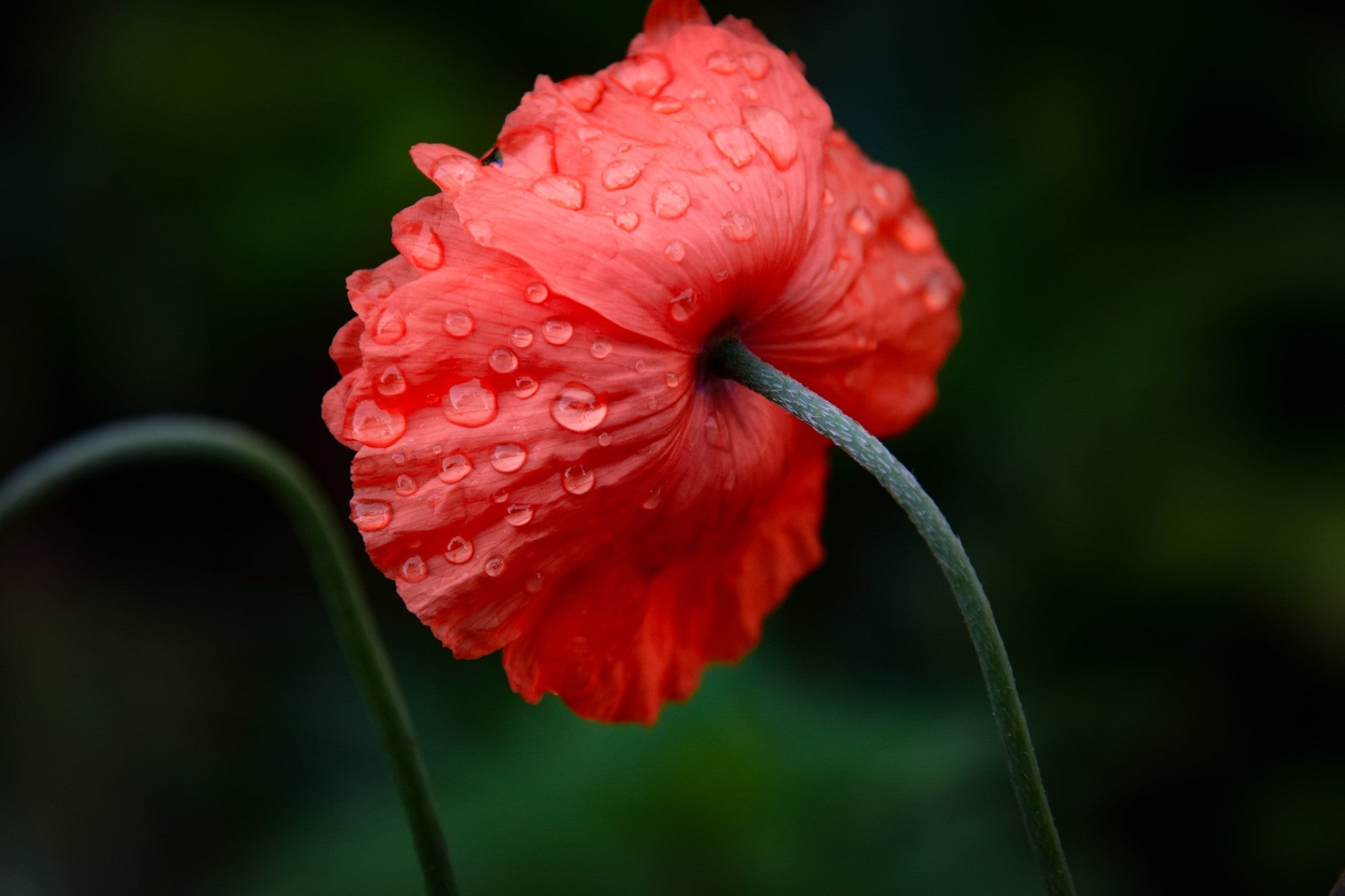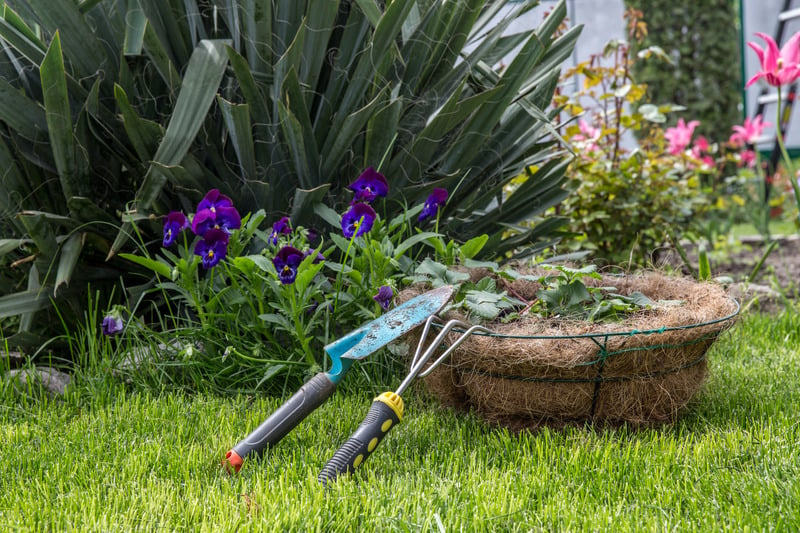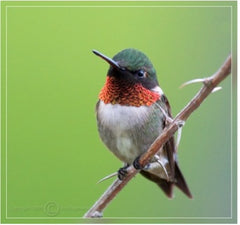
Hummingbirds are a welcome addition to any landscape. Brightly colored and highly active, they require large quantities of food for such a small body.
As gardeners, we can help them by offering feeders and flowers that will give them the nourishment they need for their summers here and their long journey south in the fall. Below are some tips on gardening for hummingbirds and how to provide for them with feeders.
Birdbaths and Bathing
Like all birds, hummingbirds need to bathe and they like to perch. When selecting the area for your garden, whether it is a new garden or adapting an existing garden, provide an area where the little birds may bathe. Hummingbirds prefer moving water, like that of a fine mister or sprinkler.
They will use birdbaths, although you will need to add rocks to one area of the bath to create a place where the depth is no more than 1 ½”. Hummingbirds are also very protective; they need a place to perch nearby where they can survey their territory.
Flower Color and Variety
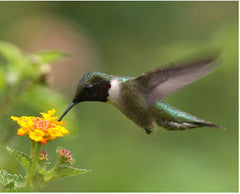
Hummingbirds are usually attracted to red flowers, only because they have learned from experience that red flowers typically contain more nectar than others. However, they will also feed at purple, pink, orange, yellow, and even white flowers. The shape of a blossom can sometimes attract them as well. Tubular blossoms, like those on Cardinal Vine or Honeysuckle, can hold more nectar than flatter blossoms.
However, once hummingbirds find your garden, they are not choosy! They will visit any and all flowers available to them no matter the shape or color. When you begin to plan your garden, select a variety of perennials, annuals, shrubs, and vines that have overlapping periods of bloom so that there is always a source of nectar. Be sure to have some plants that will bloom in the spring and fall, the times when most hummingbirds are feeding heavily either before or after a long migration.
Hummingbird Feeders
In Minnesota, it can be difficult for returning hummingbirds to find enough food from flowers in the spring. Providing a feeder is a great way to feed them early in the season and supplement the nectar received from your flowers all summer. Hummingbird feeders should be a complement to the rest of the nectar and bugs in your garden, not be the only source of food.
There are two types of feeders that you can use, both of which are easy and cheap to maintain. The most common is a liquid feeder; many are red or have red and orange decorations that eliminate the need for red food dye which can be a bit harmful.
Nectar
You can either purchase nectar or make your own. Homemade solutions are easy to make and sometimes safer than store bought products.
A solution of 4 cups water and 1 cup sugar, boiled for at least 30 seconds to inhibit mold growth, will feed the lively little birds quite well. Be sure to use real sugar as artificial sweeteners do not contain enough calories and honey can sometimes contain botulism organisms that can kill the tiny birds. Do not microwave the solution as it can break down the sugars and make the food less nutritional.
It is very important to keep the feeder clean by changing the sugar solution every 4 days in the hot summer, or once a week in cooler weather. Be sure to put the feeder up a week or more before the expected return date of hummingbirds and leave it up well into the fall to help feed them before their long journey south.
Hummingbirds Eat Insects Too!
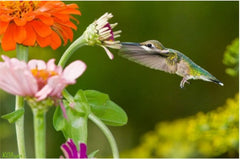
Hummingbirds are a true gardener’s friend as they also eat gnats, mosquitos, and aphids. You can help provide them these sources of protein by creating a bug bag. Simply place half an orange peel, banana peel, or other small amount of fruit in a thistle bag and hang. The fruit will attract fruit flies, which the hummingbirds love to eat! Just remember to use small amounts as you don’t want to attract a large number of insects.
